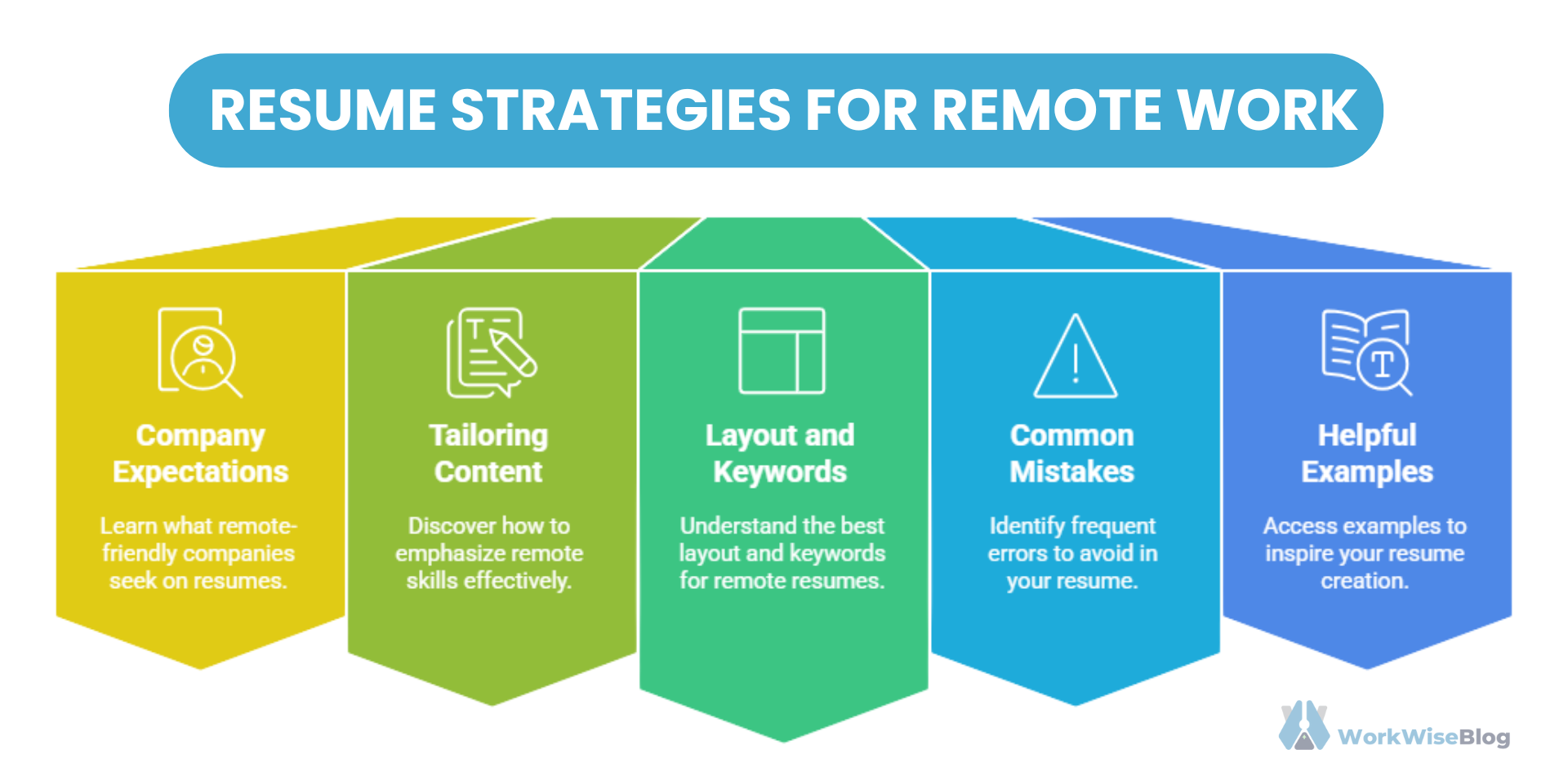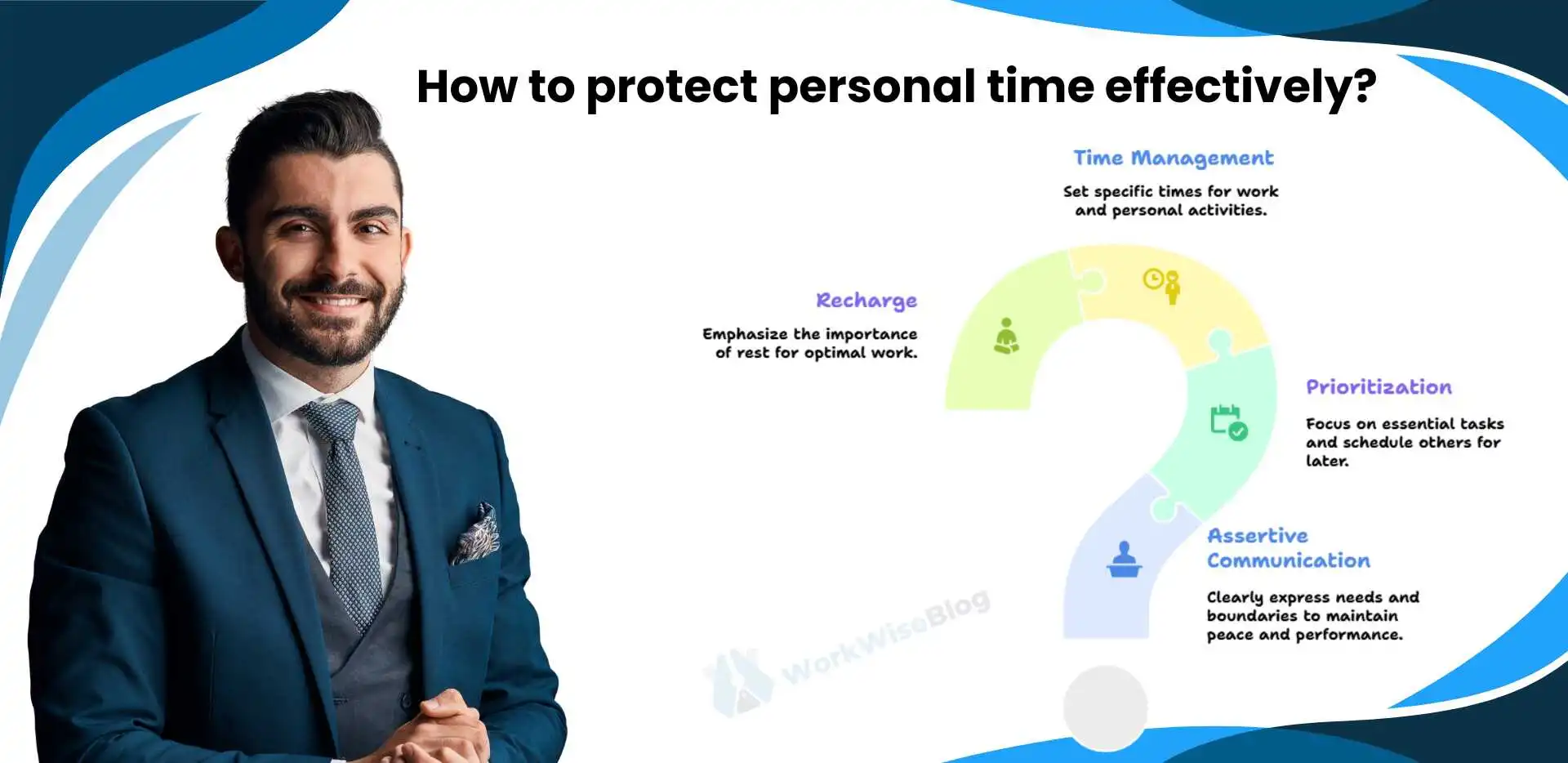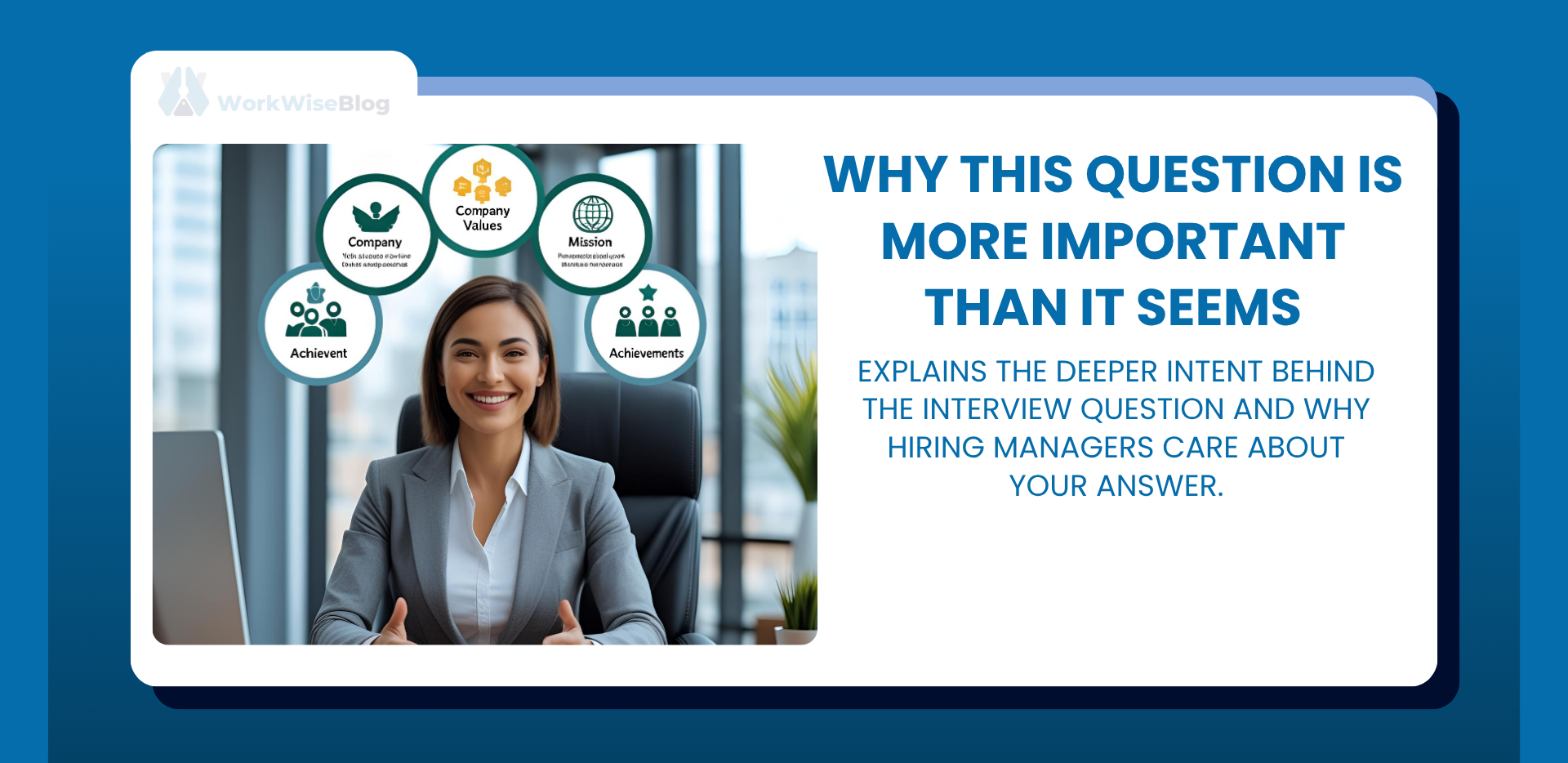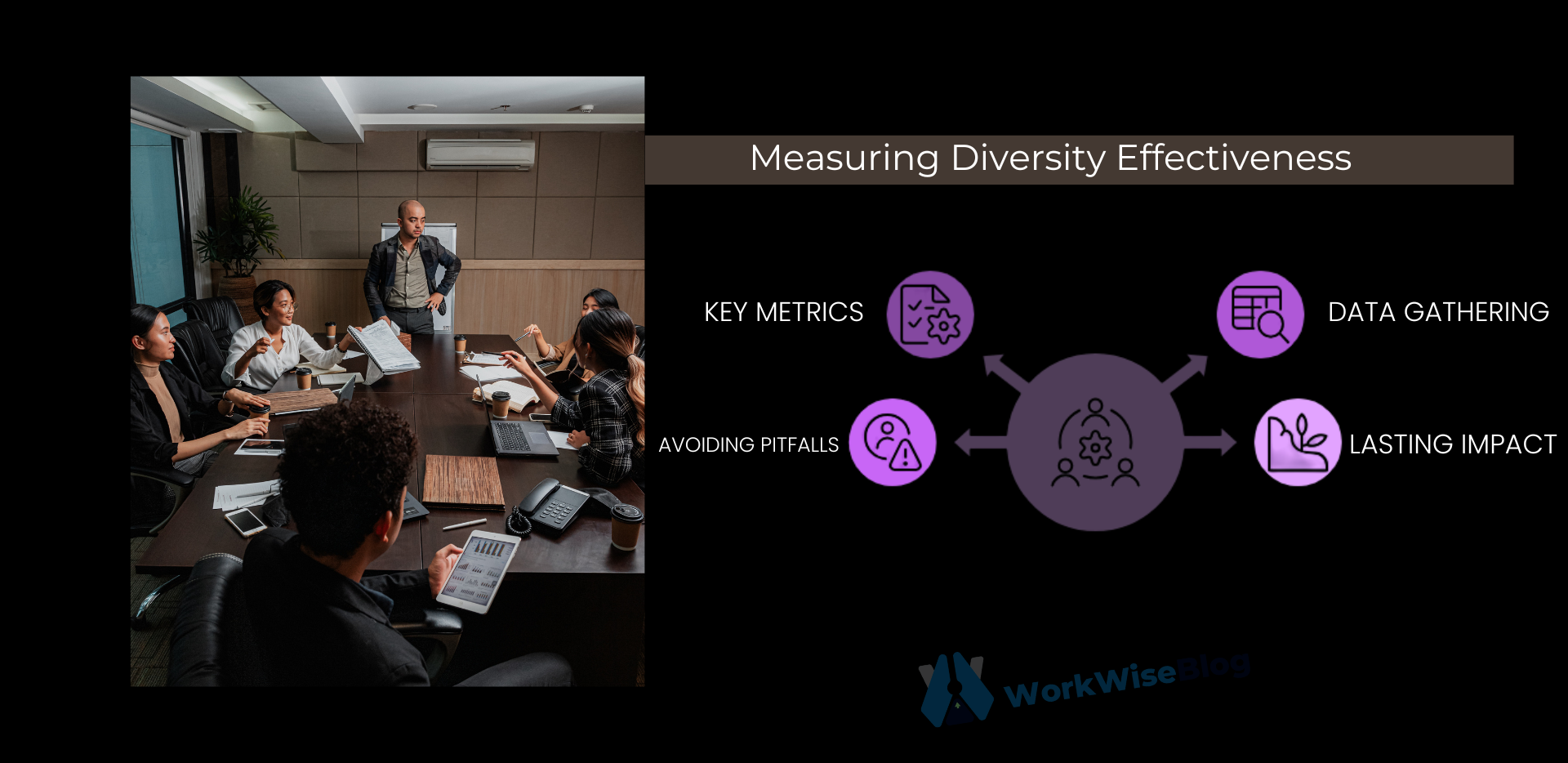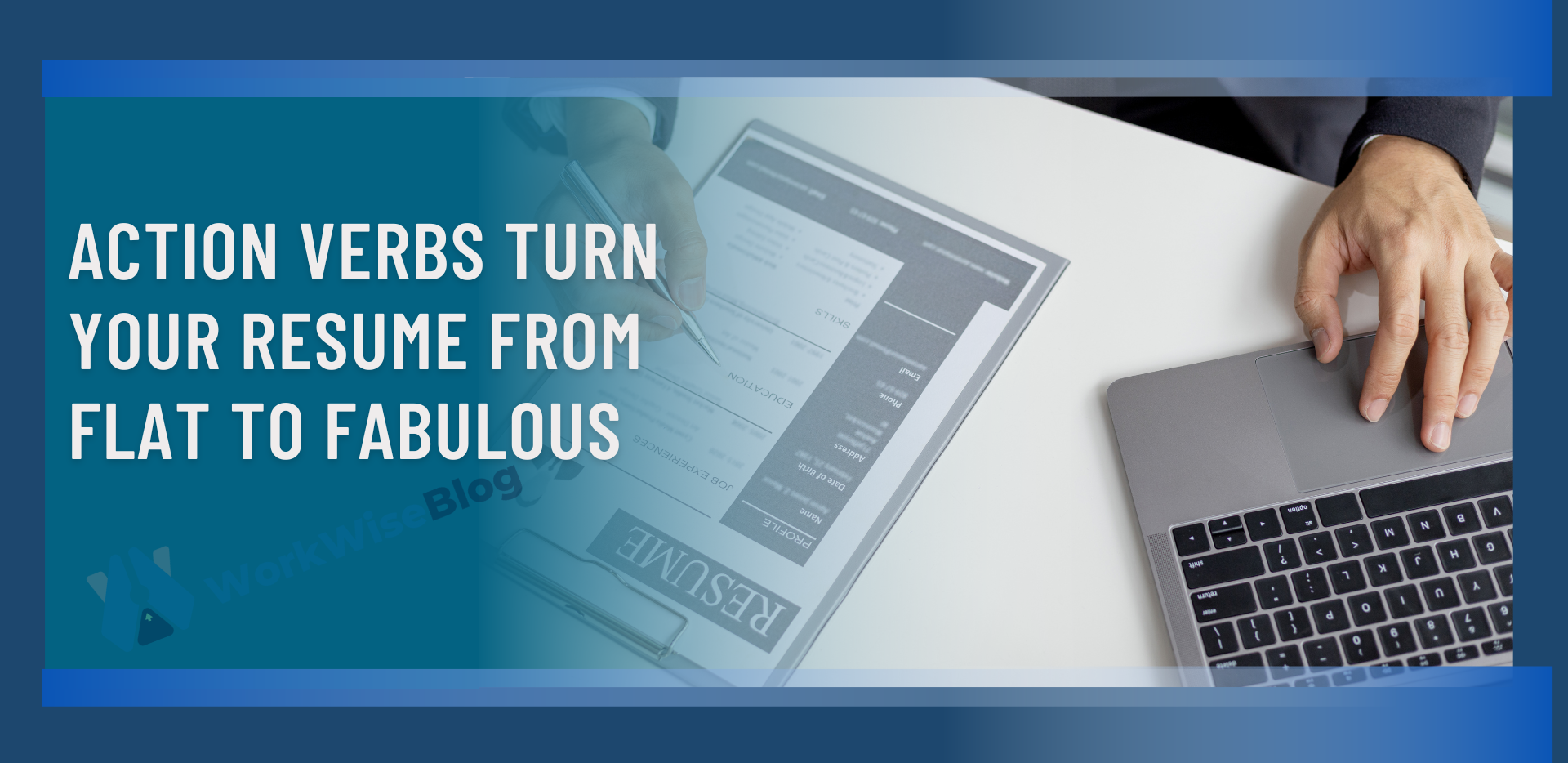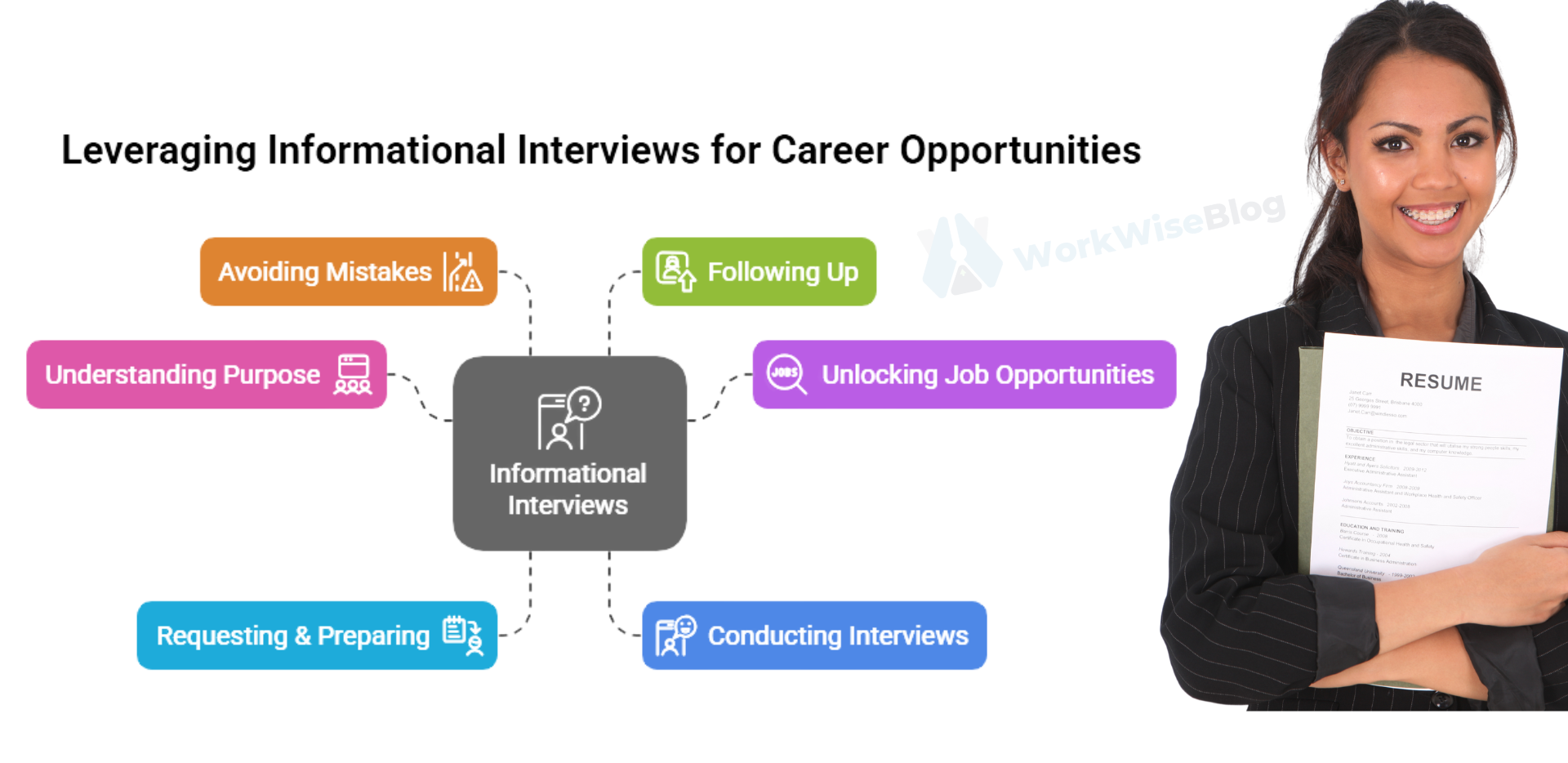In this blog, you’ll learn:
- What remote-friendly companies look for on your resume
- How to tailor your content to highlight remote skills
- The best layout and keywords to use
- Common mistakes to avoid
- Examples to help you get started
Let’s transform your resume into a remote-job magnet.
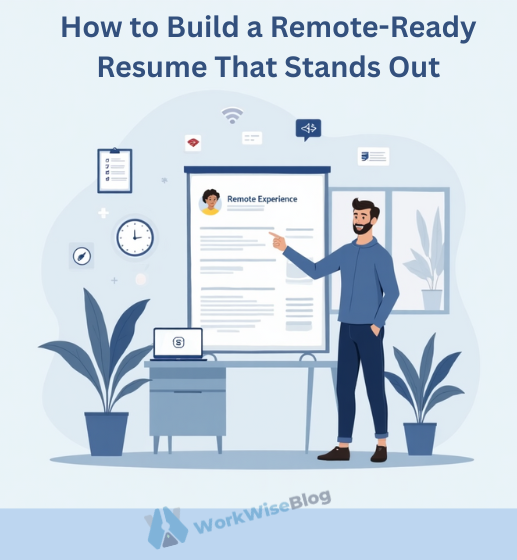
1. Why You Need a Remote-Ready Resume
Remote jobs attract more applicants than traditional roles. Why? Flexibility, global access, and better work-life balance. But with competition that fierce, your resume must do more than list job titles—it must convince employers that you’re self-sufficient, tech-savvy, and reliable from a distance.
Employers want to see:
- Clear communication skills
- Time management and accountability
- Tech proficiency
- Experience working independently or across time zones
- Familiarity with remote tools like Zoom, Slack, or Trello

If your resume doesn’t show how you’ll succeed remotely, you may get passed over—no matter how strong your experience is.
2. Use a Clean, ATS-Friendly Format
Applicant Tracking Systems (ATS) are common in remote hiring. That means your resume should be easy to scan, with no fancy fonts or overly designed layouts.
Keep it Simple:
- Use clear headers: Experience, Skills, Education
- Stick to one or two professional fonts (Arial, Calibri, or Times)
- Use bullet points for clarity
- Submit your resume in PDF format unless stated otherwise
Tip:
Use online tools like Jobscan to test how well your resume performs with ATS filters.
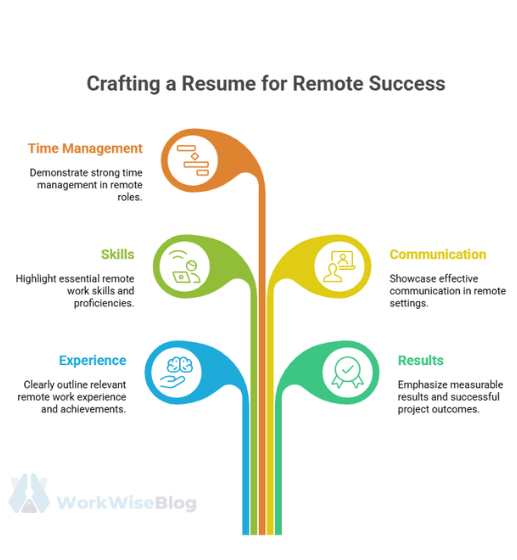
3. Add a 'Remote Experience' Section or Tag
If you’ve worked remotely—even for a portion of your role—say so!
Add “(Remote)” next to job titles:
- Marketing Coordinator – Acme Corp (Remote)
- Freelance Content Writer | Remote | 2021–2023
You can also create a short “Remote Experience” section or highlight it in your professional summary.
Example Summary:
“Detail-oriented project manager with 4+ years of experience leading cross-functional teams remotely across multiple time zones. Proficient in virtual collaboration tools and known for delivering complex projects ahead of schedule.”
This tells the employer right away that you’re ready for a remote setup.

4. Highlight Remote-Friendly Skills
Technical expertise is important—but for remote roles, soft skills matter just as much, if not more.
Must-Have Remote Skills:
- Time management
- Written and verbal communication
- Digital collaboration
- Self-motivation
- Accountability
- Problem-solving
- Adaptability
- Organization
Include both hard and soft skills in a dedicated Skills section and weave them into your work experience.
5. Show Results, Not Just Responsibilities
Hiring managers want proof that you can get results—even when no one’s watching you in an office.
Instead of this:
“Managed social media accounts for the brand.”
Write this:
“Managed 4 brand accounts remotely, increasing Instagram engagement by 45% and reducing response time by 30% using automated tools.”
Show your impact and outcomes, not just your to-do list.
6. Include Tools You’ve Used in Remote Work
Remote teams rely on technology. Listing your proficiency with tools tells employers that you can hit the ground running.
Tools to Include:
- Communication: Zoom, Slack, Microsoft Teams
- Project Management: Trello, Asana, ClickUp, Monday.com
- File Sharing: Google Workspace, Dropbox
- Time Tracking: Toggl, Hubstaff
- Collaboration: Miro, Figma, Loom
Mention them where they fit naturally—either in your Skills section or under specific roles.
7. Tailor Your Resume for Each Remote Job
Generic resumes rarely work—especially for remote roles. Customize your resume using keywords from the job description.
- Match specific skills mentioned (e.g., “remote onboarding,” “client presentations via Zoom”)
- Mirror job title language if it aligns
- Emphasize required soft skills like “collaboration,” “initiative,” or “independent problem solving”
You don’t need to rewrite the whole thing—just tweak key areas so your resume resonates with that specific role.
8. Showcase Remote Achievements
Use real examples of how you’ve succeeded in remote or hybrid environments. Think of challenges you’ve overcome working remotely and how you stayed productive.
Example:
“Coordinated a fully remote product launch involving four departments across three countries, resulting in a 20% sales increase within the first month.”
This shows your ability to lead, collaborate, and deliver results—even from a distance.
9. Include a Strong Cover Letter (Optional but Powerful)
While your resume speaks for your skills, a cover letter can add a personal touch, especially in remote roles where communication is key.
Use your cover letter to:
- Explain why remote work suits your style
- Describe your home office setup if relevant
- Share a story that shows how you succeed independently
- It doesn’t need to be long—just thoughtful and clear.
10. Proofread and Test Before Sending
Remote work is often detail-heavy and self-managed. A typo or formatting error on your resume might suggest a lack of attention to detail.
- Always proofread
- Ask a friend or mentor for feedback
- Test your resume on both desktop and mobile
- Save and label your file clearly: Firstname_Lastname_Resume.pdf
Final Thoughts: Your Resume Should Say,
“I’m Ready to Work from Anywhere”
In today’s competitive job market, your resume must do more than check off boxes. It needs to reassure remote employers that you’ll thrive even when no one’s looking over your shoulder.
Make your experience clear. Focus on results. Highlight tools, communication, and time management skills. Tailor every resume to show you’re not just job-ready—you’re remote-ready.
Further Reading:
- Work Wise : How To Write A Standout Resume: Key Tips for Job Seekers
- Harvard Business Review : How to Write a Resume That Stands Out

